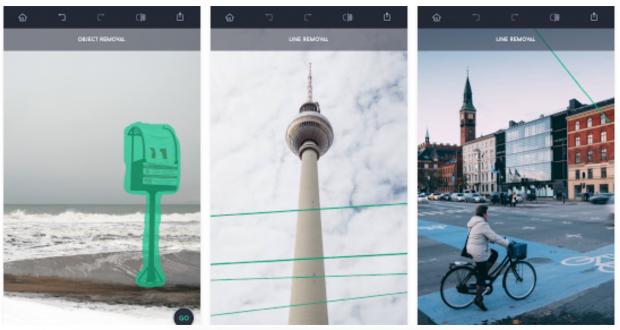Update: We've put together a video feature covering everything you need to know before buying your next pair of headphones so be sure to check that out before deciding between which of our selection of the best headphones to go for. We've also got an in-depth explanation of the different kinds of headphones in the second page of this guide.
To get the most out of your smartphone or music player, you have to buy a respectable set of headphones. There's no getting around it. The dinky throwaways that are included with today's most popular devices just can't convey the intricacies that artists put into every song.
But when it comes to making a selection, it's all too easy to get overwhelmed by the sheer amount of options to choose from.
Over-ear headphones generally provide tons of comfort and a much bigger sound than you'll hear with earbuds, but at the expense of portability. Wireless headphones mean you can walk around without being tethered to your device but, in order to have that level of freedom, depend on a battery that can run out after a few hours of use.
So, how do you choose the right set of headphones? First, think about what you're going to need from them.
Do you work in a noisy office space? Noise-cancelling headphones might be in your best interest if you want to drown out your chatty cubicle buddy. For headphones that move at the speed of life, in-ear headphones could be just what you're looking for.
Even if you're still unsure which set fits your lifestyle, there is a perfect set of headphones out there for you. With this guide, we want to help you find them.
What does techradar recommend?
Below, you'll find the top contenders in each category of headphones. We're always reviewing the latest and greatest headphones available, so you can ensure that this guide is up-to-date.
Best in-ear headphones: Klipsch Reference X6i
Audiophile sound on the go
Acoustic design: N/A | Weight: 18 grams | Cable length: N/A | Frequency response: 10-19,000Hz | Drivers: N/A | Driver type: N/A | Sensitivity: 110dB |Impedance: 50 ohms | Battery life: N/A | Wireless range: N/A | NFC: N/A
Extremely comfortable
Balanced, spacious sound
Lots of cable noise
Awkward carrying case
The Klipsch Reference X6i are a wonderful-sounding package. Their comfort, build quality, sound quality and features make it great value for the money, too.
If you're looking for balanced sounding in-ear headphones for $179 / £165 / AU$399, though, I can wholeheartedly recommend the Klipsch Reference X6i. Stated simply, they're supremely comfortable audiophile-level in-ear headphones for an affordable price.
- Alternative pick: Looking for bass-heavy in-ear headphones? Check out theRazer Hammerhead Pro V2
Best on-ear headphones: Bang and Olufsen H2
Posh headphones with grand sound and comfort
Acoustic design: Closed | Weight: .34 pounds | Cable length: 3+ feet |Frequency response: N/A| Drivers: Two 1.5" drivers | Driver type: N/A|Sensitivity: N/A | Impedance: N/A
Swanky style
Comfortable
Warm sound
Cable isn't universal
When you wear the B&O H2, people will look at you with intrigue, desperately trying to figure out who makes it so they can buy their own later online. I should know: it's how I found out about them.
Thankfully, the H2 sounds as good as it look. The sound performance should please even picky listeners with its warm, evenly-balanced sound. We're trained to assume that good looks are a guise, but the H2's slick design complements the sound performance quite nicely.
- Alternative pick: The Skullcandy Grind are a fantastic alternative for listeners on a budget
- Alternative pick: The Beyerdynamic Custom One Pro Plus are our previous favorite over-ear headphones, featuring great sound and impressive customization for a great price.
- Alternative pick: The Jabra Move Wireless is a cheap choice that looks slick.
Best over-ear headphones: Oppo PM-3
Closed back planar magnetic headphones from the gods
Acoustic design: Closed | Weight: 0.71 pounds | Cable length: 9.8 ft or 3.9 ft |Frequency response: 10-50,000Hz | Drivers: 55mm | Driver type: Planar Magnetic | Sensitivity: 102dB | Impedance: 26 ohms | Battery life: N/A |Wireless range: N/A | NFC: N/A
The Oppo PM-3's are a truly stunning pair of headphones. Make no mistake, we've reviewed a lot of headphones in the last 10 years but none have we become more fond of than the PM-3.
They're equally comfortable being plugged into a headphone amp at home as they are commuting through the hustle and bustle of a big city, and they stand head and shoulders above rival products from bigger brands. We really can't recommend them highly enough, they're just amazing.
Best wireless headphones: Skullcandy Grind Wireless
Stellar sound without shredding your wallet
Acoustic design: Closed | Weight: 0.68 pounds | Cable length: N/A | Frequency response: N/A | Drivers: 40mm | Driver type: Dynamic | Sensitivity: N/A |Impedance: N/A | Battery life: 12 hours | Wireless range: 33 feet | NFC: No
In the battle of the brands, it can be hard to trust an outsider. You probably know and trust companies like Sennheiser, Sony, Bose and Beats. And nothing against the tried and true headphone manufacturers, but a lot of what you're paying for is the name.
The Skullcandy Grind Wireless is a black sheep, it breaks convention left and right and yet delivers in all the major areas. It's far from perfect (see: battery life and accessories), but, for its $89 (£69, about AU$116) price tag, you're getting a great-sounding, well-constructed pair of cans that know how to rumble with bass notes and rock with mids and highs.
Best noise-cancelling headphones: Bose QuietComfort 35
Bose has cut the wires off its flagship noise-cancellers with great success
Acoustic design: Closed | Weight: 0.68 pounds | Cable length: 3.94 feet | Frequency response: N/A | Drivers: N/A | Driver type: N/A | Sensitivity: N/A | Impedance: N/A | Battery life: 20+ hours | Wireless range: N/A | NFC: Yes
Bose has finally brought its fantastic noise-cancelling technology to a pair of wireless headphones and it's done so without any of the traditional drawbacks of wireless headphones. They sound great, and their battery life is long enough for all but the longest of flights.
At $349.95 (£289.95 / AU pricing tbc) the QC35s sit firmly at the premium end of the spectrum, but if you want the best noise-cancelling headphones available right now then you can't get any better.
- Alternative pick: If you're looking for a super premium pair of noise-canceling cans, check out the Philips Fidelio NC1.
There's usually more to a set of headphone than meets the eye. As such, we've provided a breakdown of what you can expect to find in each kind of headphone.
Not only will learning more about headphones help you make a more informed purchase, but you'll know when you're really getting your money's worth.
In-ear headphones
This type of headphone, more commonly referred to as an earbud or earphone, is usually the cheapest and easiest way to pump audio into your ears. If you've purchased an MP3 player, or more recently, a smartphone, it's likely that a set was included with the purchase.
Earphones rest in or just outside the ear canal, creating a tight seal to keep air out and sound in. Compared to other types of headphones, these are the most discreet ones you'll find. Their small form-factor also makes them the king/queen of portability and the prime choice for athletes.
You're not likely to find strong performers at the low-end of the price spectrum. Their sound delivery is generally muddled, lacking bass and overcompensating for that with harsh mids and highs. That said, it won't cost you much money at all to find a value-packed option complete with inline controls and a microphone.
On-ear headphones
While similar to over-ear headphones in appearance, they fit to your head a little differently. Instead of enveloping your ears with a soft cushion, on-ear headphones create a light, breathable seal around your ear. Thus, the noise isolation is much less effective than in-ear or over-ear options. This might be a dealbreaker for some, but there are big benefits to consider here.
On-ear headphones are usually more portable than their over-ear brethren, and as such they appeal to travellers and the fitness crowd. Taking a walk or a jog around town is also safer, as you can hear traffic go by and be aware of potential hazards.
Over-ear headphones
This ear-muff style of headphone generally provides greater richness and depth of sound, which allows listeners to pick apart the instruments and sounds much easier. Additionally, over-ear, or circum-aural headphones, go around the ear and offer a generous amount of padding.
The price range for a set of on-ear headphones begins around $100 and from there, the sky's the limit. For example, the Oppo PM-1, while excellent, are priced exorbitantly at $1,099. It's definitely not necessary to spend that much. That said, you tend to get what you pay for.
If your headphone budget is in the $2-300, you'll start getting into options that have excellent build quality, premium materials and amazing sound and features like ANC (active noise cancellation.)
Wireless headphones
This style of headphone doesn't limit you to a specific form factor like the others. In fact, you can find in-ear, on-ear and over-ear headphone styles sans wire.
Opting to go wireless will cost you a premium of anywhere between $50-100 over the price of wired cans. Going futuristic isn't cheap. One important thing to consider is that your music player must support the Bluetooth wireless protocol, as it's required to use this type of headphone.
Speaking of Bluetooth, it has become exponentially more reliable over time, but it's always susceptible to disturbances in the force. In short, any little thing, from the understandable (conflicting Wi-Fi signals, microwaves, cordless telephones), to the absurd (sticking a hand in the space between the device and the headphones) can sometimes interrupt a wireless listening experience.
Noise-cancelling headphones
This category, like wireless headphones, isn't limited to a form factor. You can find this clever mix of technologies integrated into the ear pieces of in-ear and over-ear headphones alike.
Many companies falsely claim to offer true noise cancellation with just the padding included around the ear cups. Don't believe it. This is PNC (passive noise cancellation), and it doesn't amount to much. You can even replicate this effect by cupping your hands around your ears, so why shell out the big bucks for it?
On the other hand, ANC (active noise cancellation) is the real deal. This technique employs a set of external microphones, which detect the decibel level outside. Once it has an idea of the incoming noise level, the headphone speakers inside transmit a noise generated to dampen the racket. The end result is an effect that hushes the outside noise, allowing you to focus.
Related product: Oppo PM-3















No comments:
Post a Comment